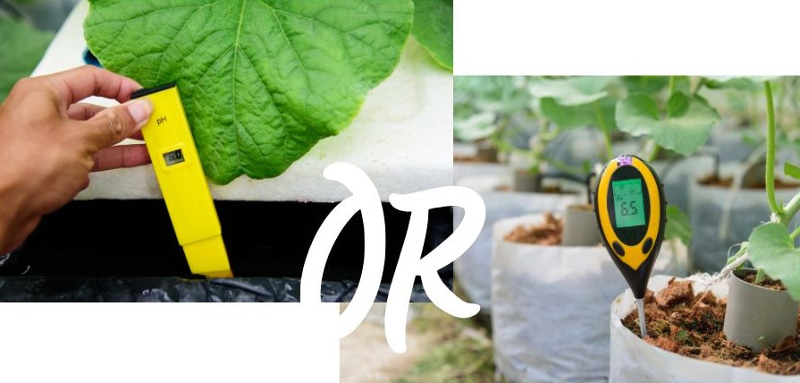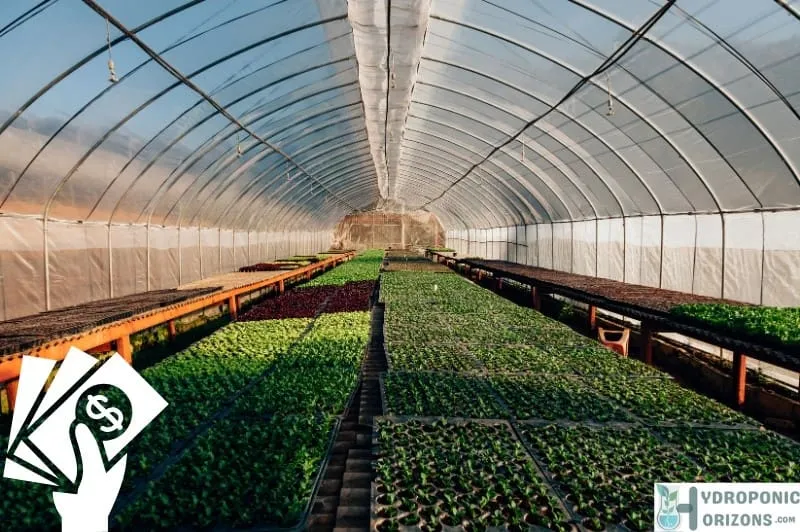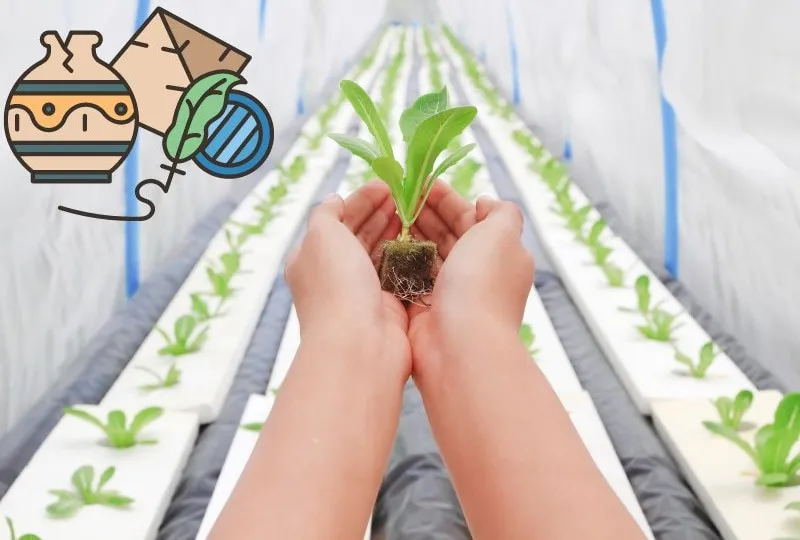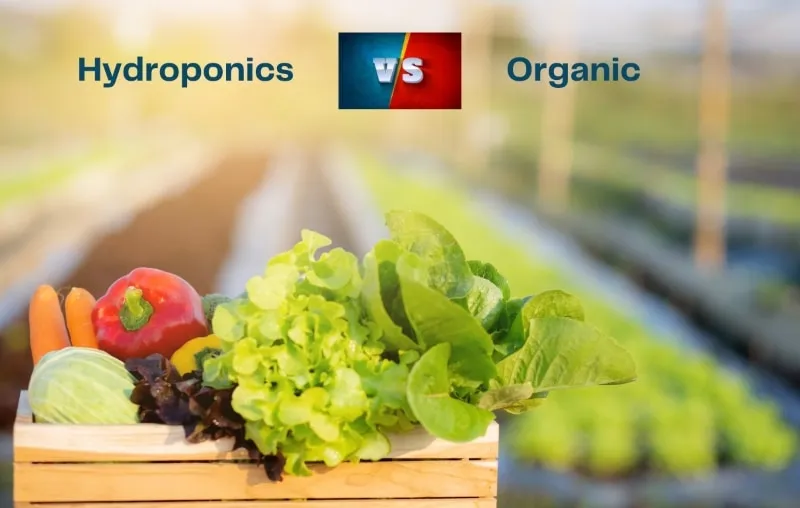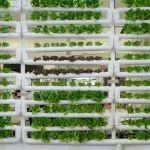If you’re tired of the same old gardening routine and want to try something new and exciting, look no further than hydroponics! Hydroponics is a method of growing plants without soil, using nutrient-rich water instead. How do I start a hydroponic garden for beginners? It may seem intimidating at first, but with the right guidance, anyone can start their own hydroponic garden at home.
In this article, we will provide you with a comprehensive guide to hydroponics for beginners. We’ll cover topics such as what is needed to grow plants hydroponically, and which system is best for starting out at home. We’ll also discuss what you need to get started, including the equipment, nutrients, and plants. Additionally, we’ll provide tips on how to maintain your hydroponic garden, including monitoring pH levels and preventing pests and diseases.

By the end of this article, you’ll be equipped with all the knowledge you need to start your own hydroponic garden and enjoy fresh, healthy produce all year round. With dedication and patience, it can yield impressive results, allowing you to cultivate a variety of plants in a soilless environment. Embrace this innovative approach, and explore the numerous benefits it has to offer!
- What are Plants Made Of?
- How Hydroponics Work
- What Are the 5 Requirements for Hydroponics?
- Is Hydroponics Expensive?
- Is Hydroponics Easy for Beginners?
- What Types of Plants Cannot be Grown in Hydroponics?
- What is the Best Hydroponic System for Beginners?
- Setting Up Your DWC Hydroponic Garden
- Setting Up Your NFT Hydroponic Garden
- Planting and Growing
- Maintaining Your Hydroponic Garden
- Harvesting and Enjoying Your Produce
- Hydroponic Kits for Beginners
- More Hydroponics Tips for Beginners
What are Plants Made Of?
Before beginning hydroponics, understanding the composition of plants is essential for you to have a thriving hydroponic garden. Plants, like all living beings, are made up of essential building blocks that keep them healthy and functioning efficiently.
At the core, plants are built from cells, which contain various structures, such as the nucleus, chloroplasts, and mitochondria. Cells are mainly composed of carbon, hydrogen, and oxygen, which make up about 95% of a plant’s dry weight. The remaining 5% consists of essential minerals and trace elements, such as nitrogen, phosphorus, potassium, calcium, and magnesium.
Let’s take a closer look at these building blocks of plants:
- Carbon, Hydrogen, and Oxygen: The foundation of all carbohydrates, which provide energy and structural support, comes from carbon dioxide and water that plants absorb from the air and their surroundings.
- Nitrogen: A crucial component of proteins, enzymes, and chlorophyll, plants require nitrogen to drive photosynthesis, regulate growth, and promote overall health.
- Phosphorus: Phosphorus is a crucial component of DNA, RNA, and ATP – essential chemicals responsible for energy storage, growth, and reproduction.
- Potassium: An aid in protein synthesis and water regulation, potassium plays a critical role in the overall strength and health of the plant.
- Calcium: Fundamental in maintaining cell wall strength and stability, calcium also aids in the transportation of nutrients through the plant, fostering efficient growth.
- Magnesium: As a critical component of chlorophyll, magnesium also helps enzyme activation processes, ensuring your plants grow to their full potential.
How Hydroponics Work
Hydroponic gardening is a unique method of growing plants without soil. It might seem like a futuristic idea, but it’s surprisingly simple once you understand the basics. In hydroponic systems, plant roots are submerged directly in nutrient-rich water, providing them with the essential elements needed for growth.
When you learn about the basics of hydroponics, you’ll see that there are several types of hydroponic systems, but the most common ones are Nutrient Film Technique (NFT), Aeroponics, Drip Systems, and Deep Water Culture (DWC). Each system has its advantages and disadvantages, but they all rely on water, aeration, and nutrients to sustain the plants.
A significant aspect of hydroponics is the growing medium. While soil is not used in this technique, plants still need support for their roots. Several materials can be used as a growing medium, such as coco coir, perlite, and clay pebbles. These mediums provide stability and also help with aeration and drainage. Rockwool is a popular medium for hydroponics but there are more eco-friendly alternatives to Rockwool too.
Successful hydroponic systems require consistent monitoring and management of factors like pH, temperature, and nutrient levels. By keeping a close eye on these variables, you can adjust and fine-tune the conditions, promoting a fruitful and dynamic growing experience.
What Are the 5 Requirements for Hydroponics?
As you embark on your hydroponic journey, it’s crucial to understand the five key requirements for a successful basic hydroponic setup. Let’s dive into each element and see how they contribute to a flourishing hydroponic system.
- Light: Plants need the right amount of light to grow and thrive but do hydroponics need sunlight? Your hydroponic system should provide adequate light, ideally using energy-efficient LED grow lights. The intensity, duration, and spectrum of light all play a role in ensuring optimum growth for your plants.
- Oxygen: Even though plants primarily take in carbon dioxide, they also require oxygen for essential processes like respiration. Ensure that the root zone in your hydroponic system has proper aeration, so your plants can access the oxygen they need for healthy growth.
- Carbon Dioxide: Photosynthesis, a fundamental process for plant growth, requires carbon dioxide. Your hydroponic setup should have sufficient ventilation and air circulation to provide an ample supply of this vital gas.
- Water: In a hydroponic system, water serves as the medium for nutrient delivery. It’s essential to maintain the right water quality by monitoring pH levels, temperature, and making sure you have a system for recirculating or replacing the water as needed.
- Nutrients: Hydroponic plants rely on nutrient solutions for their growth and development. You must select the appropriate nutrient mix and concentration for the specific plants you are growing. Monitor nutrient levels regularly and make adjustments as needed to ensure a well-balanced diet for your plants.
By keeping these five requirements in mind and tailoring your hydroponic system to fulfill them, you’re on the right track to cultivate a thriving, productive garden. Remember to adjust each element as necessary to support your plants’ unique needs, and don’t be afraid to experiment to find the optimal conditions for your specific setup.
Is Hydroponics Expensive?
Embarking on a hydroponic journey might raise questions about costs. It’s natural to wonder if this method of growing plants is expensive. Let’s break it down in a way that it’s easy to grasp.
The initial setup of a hydroponic system can be a bit pricey. You’ll need to invest in equipment such as grow lights, pumps, and nutrient solutions. However, once you’ve set up your system, operating costs can be quite reasonable, especially when compared to traditional soil-based gardening.
Consider these factors when thinking about costs of starter hydroponics:
- Size of your system: Larger hydroponic systems naturally require more materials and resources, which can increase expenses.
- DIY vs. pre-made: Building your hydroponic system at home from scratch can save money but requires time, patience, and know-how. Pre-made systems are easier to install but can be more costly upfront.
- Energy usage: Efficient grow lights, pumps, and timers can help minimize electrical costs.
Ultimately, the expense of hydroponics depends on your specific situation, preferences, and goals. By carefully planning and understanding your unique needs, you can cultivate a thriving garden without breaking the bank.
Is Hydroponics Easy for Beginners?
Embarking on the hydroponic journey might seem daunting at first, but fear not! It’s actually a manageable and rewarding endeavor, even for beginners. With some patience, dedication, and proper guidance, you’ll find that hydroponics at home can be quite accessible.
For starters, hydroponic systems come in various shapes and sizes, catering to all skill levels. Choosing the right system for you will be the key to a successful start. As a beginner, it’s wise to opt for a smaller, simpler system, making it much easier for you to manage and maintain.
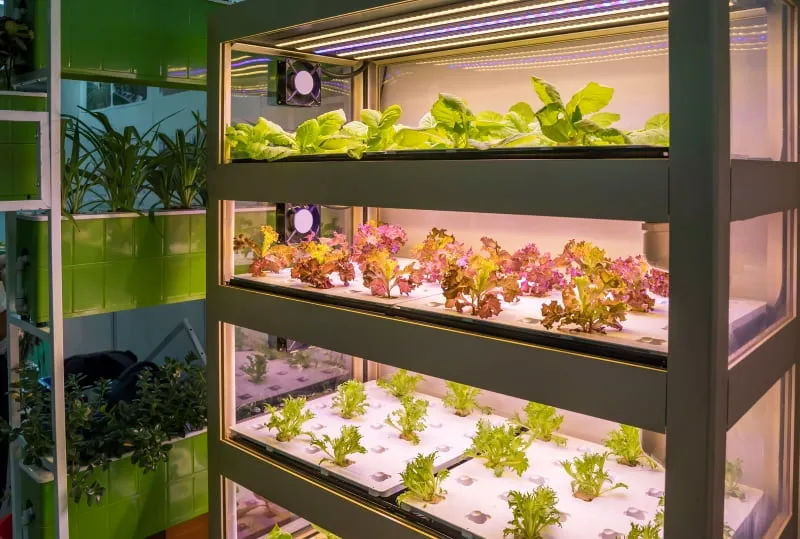
Additionally, the internet is a treasure trove of resources and tutorials, enabling you to educate yourself on the fundamentals of hydroponics. It’s important to understand basic concepts such as nutrient solutions, pH levels, and lighting requirements. Becoming acquainted with these crucial elements will set you up for success.
Moreover, hydroponics at home invites a supportive, enthusiastic community. Engaging with fellow hydroponic enthusiasts can help you learn faster, overcome challenges, and feel a sense of camaraderie. Platforms such as social media, forums, and blogs provide a wealth of shared experiences and insights.
Lastly, don’t forget that practice makes perfect. As with any new skill, you will face hurdles, make mistakes, and learn from them. It’s crucial to stay persistent, frequently assess your progress, and adjust your methods based on the results.
So, is hydroponics gardening for beginners easy? While it may take some time to familiarize yourself with the process, you’ll find that it’s a gratifying and achievable pursuit.
If you’re eager to get started but would like a comprehensive book to walk you through creating a hydroponic garden, we have compiled a good list of books about hydroponics to choose from.
What Types of Plants Cannot be Grown in Hydroponics?
While hydroponics offers a myriad of benefits for growing various plants, there are some crops that don’t thrive as well in this system. Delving into this topic, you’ll have a better idea of what to avoid when setting up your hydroponic garden.
How much space do roots need in hydroponics? First and foremost, plants with deep root systems or those that require substantial space generally face difficulties in a hydroponic environment. Some examples include corn, carrots, beets, and potatoes. These crops struggle due to the limited space in hydroponic containers, which hinders their optimal growth. Likewise, vine crops require a lot of space to grow too. Nevertheless, you can still experiment with these plants by trying out different varieties and cultivation techniques.
Another category of plants to be cautious with are fruit trees and certain shrubs, such as apple trees, peach trees, and blueberry bushes. Fruit trees and shrubs need a more complex root structure and larger area to grow, making it challenging for them to flourish in hydroponic setups. They also require a dormant period to grow properly so it can be challenging to replicate this natural cycle. However, some dwarf varieties may work in hydroponics if you’re adamant about incorporating them into your garden.
Lastly, it’s essential to consider the pollination requirements of your plants. Self-pollinating plants like tomatoes and peppers do well, while plants that require insect pollination might face obstacles. This factor doesn’t necessarily mean that these plants are impossible to grow hydroponically, but you’ll need to provide extra care and attention to ensure successful pollination.
What is the Best Hydroponic System for Beginners?
Embarking on your journey towards hydroponic gardening can be both exciting and perplexing. Fear not, eager hydroponics growers! With an array of systems to choose from, there’s bound to be one that tickles your green thumb.
Two standout choices for beginners like yourself are the Nutrient Film Technique (NFT) and the Deep Water Culture (DWC) system. Each has its own merits, and understanding their distinct features may help you determine which shines brightest as your hydroponic sidekick.
| Nutrient Film Technique (NFT) | Deep Water Culture (DWC) |
| Plants grow in a gentle stream of nutrient solution. No growing medium necessary. Great for propagation and quick-growing crops. | Plants suspended in nutrient-infused water. Air stones keep oxygen supply consistent. Perfect for space-saving and water-loving plants. |
The NFT system provides a continuous flow of nutrient solution, caressing the roots of your beloved plants. It does not require a growing medium, which can make your maiden voyage into hydroponics even smoother. NFT is especially desirable if you’re keen on propagating leafy greens and herbs with a zest for life.
On the other hand, if you’re a fan of compact spaces and plants that thrive in aquatic environments, the DWC system could be your go-to. It is the easiest hydroponic system for beginners and an intriguing and efficient method that involves suspending your plant in nutrient-rich water with air stones to ensure sufficient oxygenation. It’s ideal for newcomers looking to make a splash!
In any case, your choice of system hinges on your individual preferences, your daring aspirations, and the plants you dream of cultivating. Let’s now look at how to start growing with hydroponics.
Setting Up Your DWC Hydroponic Garden
Setting up a Deep Water Culture (DWC) hydroponic garden can be an exciting endeavor, especially if you’re a beginner. Here, we will guide you through the process of setting up your garden, covering the materials and equipment needed, creating the perfect environment, and preparing your seeds and seedlings for growth.
Materials and Equipment
You will need several essential items to set up a DWC hydroponic garden:
- A reservoir or container with water to hold the nutrient solution
- A water pump to circulate the nutrient solution
- An air pump and air stone to provide oxygen to the roots
- Net pots to hold the seedlings
- A growing tray to support the net pots
- Tubing for connecting the pumps and air stone
- A grow light for providing necessary light to the plants
- A stand to hold the grow light and growing tray
Ensure that all equipment is clean and in working condition before you begin setting up your hydroponic garden.
Creating the Environment
Now that you have your equipment ready, it is essential to create an ideal environment for your plants to thrive. You should aim for:
- Temperature: 65-75°F (18-24°C)
- Humidity: 40-60%
- Carbon dioxide levels: 1000-1500 ppm
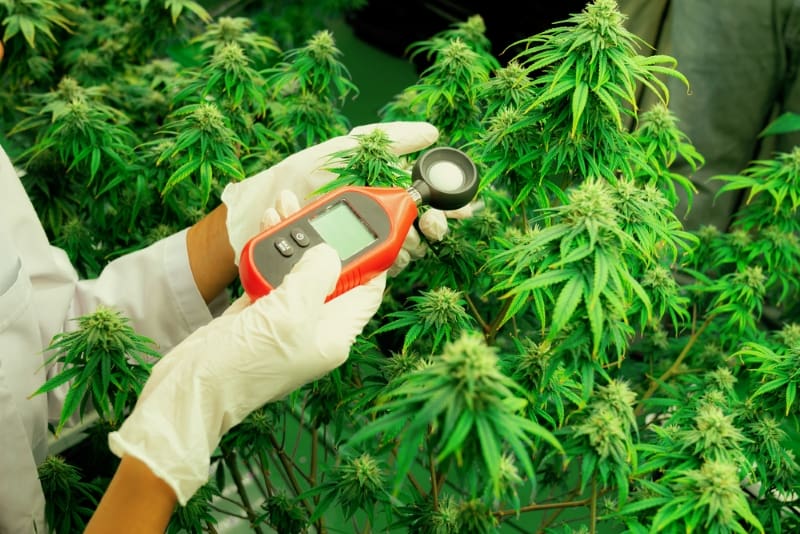
Adjust your room’s temperature, humidity, and carbon dioxide levels accordingly. Keep in mind that fluctuating environmental conditions could stress your plants and inhibit growth.
Install your grow light above the growing tray, and ensure that the desired light intensity and spectrum are provided. You may consider using several grow lights and a timer to control the light duration for optimal growth.
Preparing Seeds and Seedlings
It’s time to prepare your seeds and seedlings for planting. Start by selecting suitable plant varieties. DWC is ideal for growing a wide range of herbs and lettuce as well as tomatoes.
Sterilize the net pots and fill them halfway with a suitable growing medium, like coconut coir or perlite. Gently place your seeds or seedlings in the growing medium, ensuring the roots have ample space to grow.
Once the seeds or seedlings are in place, position the net pots on the growing tray above the nutrient solution reservoir. Attach the air pump and air stone to the tubing and ensure that the roots have access to the oxygenated nutrient solution.
With your DWC hydroponic garden set up, you can begin caring for your plants. Watch for any signs of nutrient deficiencies or environmental imbalances, and tend to your garden accordingly.
Setting Up Your NFT Hydroponic Garden
Setting up a Nutrient Film Technique (NFT) hydroponic garden is another popular method for beginners. Here’s how to get started:
Materials and Equipment
To set up an NFT hydroponic garden, you will need:
- A reservoir to hold the nutrient solution
- A water pump to circulate the nutrient solution
- An air pump and air stone to provide oxygen to the roots
- A growing channel to support the plants in shallow water
- Net cups to hold the seedlings
- Tubing for connecting the pumps and growing channel
- A grow light for providing necessary light to the plants
- A stand to hold the grow light and growing channel
Ensure that all equipment is clean and in working condition before you begin setting up your hydroponic garden.
Creating the Environment
Similar to DWC, creating an ideal environment for your plants to thrive is crucial. Aim for the same temperature, humidity, and carbon dioxide levels.
Unlike DWC, NFT does not absolutely require an air pump or air stone to provide oxygen to the roots but it is recommended for reliability and air pumps are not expensive anyway.
Install your grow light above the growing channel, and ensure that the desired light intensity and spectrum are provided.
Preparing Seeds and Seedlings
Select suitable plant varieties for your NFT hydroponic garden. Lightweight plants are recommended for the NFT approach due to the usage of narrow pipelines. Spinach, broccoli, cauliflower, lettuce, self-supporting plants, and and other small root system plants fall under this category.
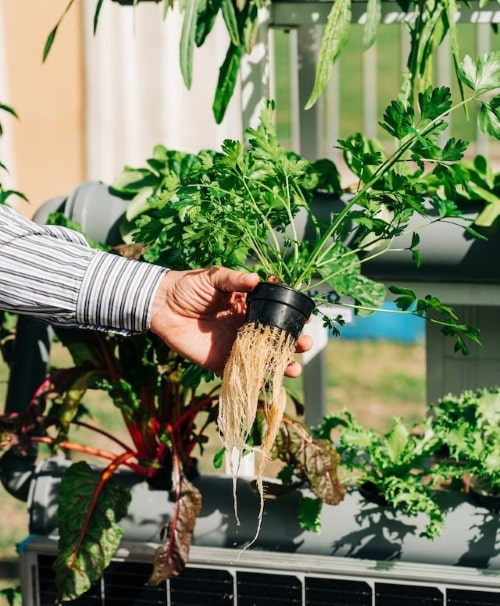
Sterilize the net cups and gently place your seeds or seedlings in the net cups that hold a suitable growing medium like clay pebbles. Because very little water is used while being re-circulated through the roots, a growing medium is needed only during this stage. Once the plants start growing, it is not needed and the roots can just dangle freely from the net pots.
Once the seeds or seedlings are in place, position the net cups in the growing channel above the nutrient solution reservoir. Attach the water pump to the tubing and ensure that the roots have access to the nutrient-rich water film.
Planting and Growing
Embarking on your hydroponic journey can be a thrilling experience. In this section, you’ll learn about planting and growing in a hydroponic environment, covering topics like selecting suitable plants, managing space, and understanding water and nutrient requirements.
Choosing the Right Plants
When it comes to hydroponics, some plants thrive more than others. Best beginner hydroponic plants include tomatoes, herbs, greens, lettuce, kale, strawberries, spinach, basil, parsley, mint, and chard. As you progress, you may want to research the specific needs of your chosen plants to ensure optimal growth.
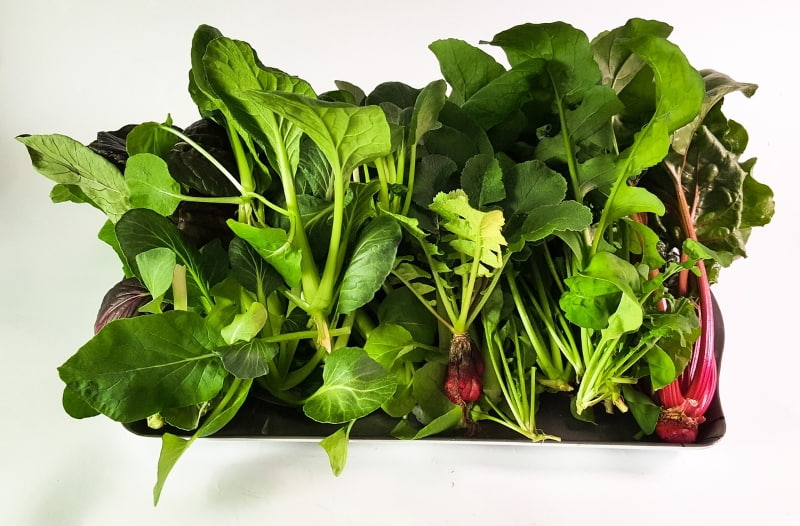
For basic hydroponics for beginners, we recommend starting with leafy greens like lettuce or kale as they grow quickly and require less maintenance. Herbs such as basil, parsley, and mint are also suitable when you’re getting started with hydroponics due to their adaptability to hydroponic systems.
Spacing and Planting
Proper spacing matters in hydroponics, just like it does when you’re working with soil. To prevent issues such as overcrowding and poor circulation, make sure to leave sufficient room between your plants.
For example, lettuce and spinach typically require around 8 inches of space between plants, while tomatoes and strawberries need about 12 inches. Remember, optimal spacing depends on the plants you are growing, so research their individual requirements before planting.
Water and Nutrient Management
Keeping an eye on the water and nutrients in your hydroponic system is vital. You’ll need to monitor pH levels consistently, as inappropriate pH can disrupt nutrient uptake.
Next, consider your system’s watering method. In some hydroponic systems, such as aeroponic or fogponic setups, plants receive a nutrient-rich mist or fog, which exposes their roots to essential oxygen. Other systems, like nutrient film technique (NFT) or drip irrigation, recirculate water through the system regularly. Regardless of the method you choose, ensure proper watering and nutrient delivery to promote robust plant growth.
Maintaining Your Hydroponic Garden
Maintaining a healthy hydroponic garden involves close monitoring and timely interventions. This section covers key aspects of garden maintenance, including balancing pH and nutrient levels, general upkeep, and pest control.
Monitoring and Adjusting pH and Nutrients
Regularly monitor your hydroponic system’s pH and nutrient levels to ensure optimal plant growth. The ideal pH range varies between 5.5 and 6.8 for most plants.
- Leafy greens and herbs generally require a pH of 5.5 to 6.5.
- Fruiting plants like tomatoes and strawberries prefer a slightly higher pH of 6.0 to 6.8.
Use a pH meter or test kit to measure your nutrient solution’s pH, and adjust with pH up or down solutions as needed. If using tap water, be aware that it can alter pH levels and may contain elements that are not ideal for your plants. To avoid issues, use filtered or reverse osmosis water whenever possible.
Nutrient concentrations also need monitoring to prevent deficiencies or toxicities. Track concentrations with a nutrient meter or test kit, and replenish depleted solutions or dilute overly concentrated mixes. Don’t forget to mix nutrients according to manufacturer instructions and be attentive to your plants’ specific needs.
General Maintenance
Inspect your hydroponic garden regularly for any signs of wear and tear. Keep an eye on tubing, pumps, and reservoirs for leaks or blockages, and promptly fix or replace damaged equipment. Periodically, clean your system with a mild disinfectant solution, taking care not to harm your plants or introduce detrimental substances to the growth medium.
Observe the roots of your plants for indicators of health or distress. Healthy roots with water should appear white or light tan and feel firm to the touch. Discolored or slimy roots can signal fungal issues or other problems that may require intervention.
Pest Control
While hydroponic gardens generally have fewer pest and weed problems than traditional soil gardens, they are not immune to infestations. Regularly inspect plants for pests (such as aphids or spider mites) and promptly address any issues. Options for pest control include introducing beneficial insects, using organic pesticides, or employing physical barriers.
- Beneficial insects: ladybugs, predatory mites, and parasitic wasps can help keep pest populations in check.
- Organic pesticides: neem oil, insecticidal soap, or horticultural oil may be applied according to label directions.
- Physical barriers: insect netting or sticky traps offer non-toxic ways to deter and capture pests.
Take a proactive stance against pests and weeds by keeping your growing environment clean and well-ventilated, and by promptly removing any affected plant material.
Harvesting and Enjoying Your Produce
As you delve into the world of hydroponics, one of the most satisfying aspects will be harvesting and enjoying the fruits (or vegetables) of your labor. In this section, we’ll discuss the ideal moments for reaping your homegrown hydroponic produce, and how to store and use them properly.
When to Harvest
Knowing when to harvest your hydroponic crops is crucial, as it ensures optimal taste and nutritional value. Different plants have varying indicators for when they’re ready to be picked.
- Leafy Greens: Harvest these when they’re young and tender, typically when leaves are at their maximum size but before they start to yellow or wilt.
- Vegetables: Generally, you should harvest veggies when they’re fully mature yet still firm. However, individual species may vary, so it’s helpful to research your specific plants’ harvesting requirements.
- Cucumber: These should be picked when they are green, firm, and moderately sized. Overgrown or yellowing cucumbers are undesirable in taste and texture.
You’ll likely notice a growth pattern, where the yield from your hydroponic garden gradually increases as you refine your skills and expertise.
Storing and Using the Produce
After your successful harvest, it’s essential to store your produce correctly to maximize freshness and flavor. Here are some general tips to follow:
| Produce Type | Storage Tips |
|---|---|
| Leafy Greens | Store in a plastic bag with a damp paper towel to maintain humidity. Keep them in the crisper drawer of your refrigerator. |
| Vegetables (e.g., tomatoes, peppers) | Store at room temperature away from direct sunlight. You can refrigerate them once they’re ripe to extend their life, but note that this can alter their texture. |
| Cucumber | Keep them away from ethylene-producing fruits (like tomatoes and bananas) that might hasten spoilage. Store them in the crisper drawer, but not in a plastic bag, as this may encourage mold growth. |
Hydroponic Kits for Beginners
Starting your hydroponic journey may seem a little intimidating, but if you feel like you’re not good with DIY options, choosing the right hydroponic kit can make it simpler and more enjoyable. These kits are designed for your convenience, offering all the necessary components to kickstart your entry into the world of hydroponics.
When considering a starter hydroponic kit, it is essential to think about the size of the setup, the type of system, and the plants you want to grow.
Most starter hydroponic kits include the following components:
- Grow Tray or Container: This is where your plants will sit and grow.
- Light Source: Grow lights are essential for proper photosynthesis and plant growth.
- Reservoir: A container to hold nutrient-rich water solution for your plants.
- Air Pump and Airstones: Provides aeration to the water and nutrients for the plant roots.
- Nutrients: A well-balanced solution for plant growth and development.
- Seed Starter Plugs: For germinating seeds or inserting plant cuttings.
More Hydroponics Tips for Beginners
Start Your Plants From Clones
Starting your hydroponic journey with clones can save you time and increase your chances of success. Clones are exact copies of a mother plant that have been snipped off and rooted, allowing you to bypass the germination process. Here are some helpful tips for working with clones in your hydroponic system.
1. Choose healthy mother plants: Be sure to select a healthy mother plant with desirable characteristics. A vigorous plant will produce strong, healthy clones that will be more likely to flourish in your hydroponic system.
2. Use sterile tools: When taking cuttings, always use clean, sterilized scissors or a razor blade. This reduces the risk of introducing pathogens or diseases to both the mother plant and the clones.
3. Rooting medium: Choose a suitable rooting medium for your hydroponic clones. Popular options include rockwool, expanded clay pellets, or coconut coir. These mediums provide the necessary support and moisture for the clones to develop roots.
| Rooting Medium | Benefits |
|---|---|
| Rockwool | Good moisture retention and oxygenation |
| Expanded Clay Pellets | Good drainage and aeration |
| Coconut Coir | Environmentally friendly and efficient at retaining moisture |
4. Rooting hormones: Apply a rooting hormone to the base of the clones’ stems to encourage faster and more robust root growth. There are various types available, including gels, powders, and liquids.
5. Maintain the right environment for your clones: Place your newly-cut clones in a humid and warm environment, typically with humidity levels between 70% and 80% and temperatures around 72°F (22°C). This will help promote root formation and ensure the clones have the best possible start.
Start Your Plants From Seedlings

If you don’t have access to a mother plant, seedlings already rooted in soil may be purchased and then carefully removed from the soil and pot. First, you should know when to transplant hydroponic seedlings, as doing it too early or too late can actually kill the seedlings.
To prevent the water from being contaminated, it is vital to thoroughly clean the roots. Once you’ve given the plants’ roots a good rinsing in water, you may place them in net pots. It will be less of a hassle if the seedling already has roots that can be pulled through the net pot and into the water. Simply place your grow media around the root system and let the hydroponic system take care of the rest.
By following these tips, you can improve your hydroponic growing experience and enjoy the benefits of starting with clones. Remember, the key to success is being attentive to your plants’ needs and creating a supportive environment for growth.
Start Your Plants From Seeds
Starting hydroponic plants from seeds is probably the cheapest way to go. Choosing seed types that have been successfully used in hydroponic systems gives you a greater chance of success. You can use a seed starting kit or gather the materials, including the growing medium, yourself, and with a little bit of care can germinate them until the seedlings are big enough to be transplanted to your hydroponic setup.

